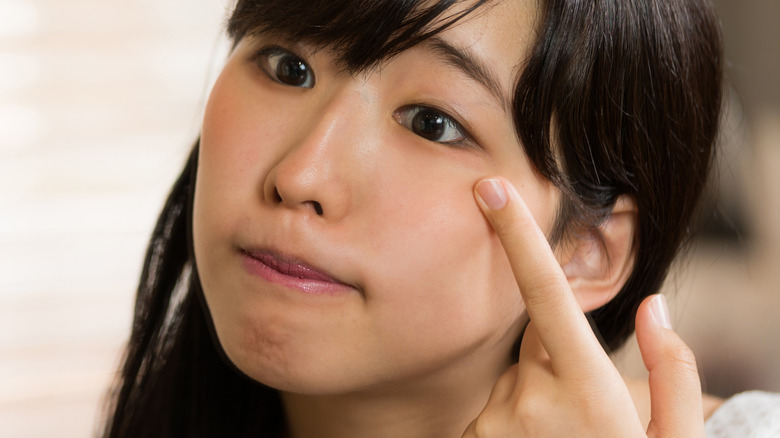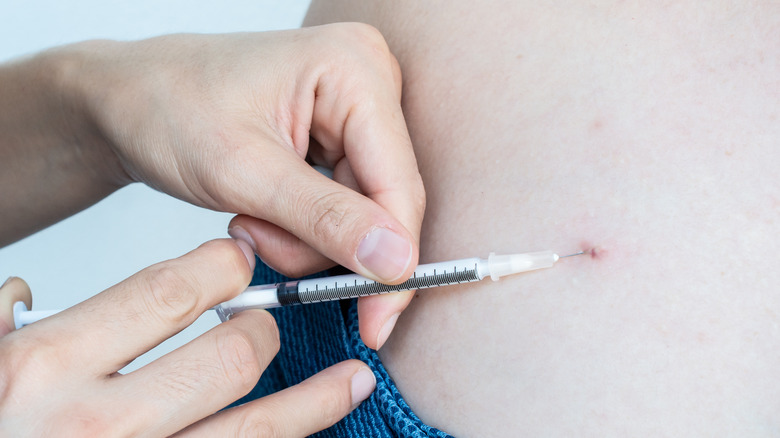How To Tell The Difference Between An Abscess Vs. A Boil
Your skin is your body's biggest organ, and it's the first barrier line of defense against dirt and germs. But as "Dr. Pimple Popper" has taught us, there are a lot of things that can go wrong with your skin if that barrier is compromised. Boils and abscesses are two types of skin eruptions that indicate things aren't what they should be under the surface. A boil is caused by staphylococcus or streptococcus bacteria that enters the skin through a cut or puncture near a hair follicle. Fluid and pus fill underneath the skin, causing a small lump (via WebMD). Boils can occur anywhere on the skin, but are most common on the face, buttocks, armpits, or anywhere the skin can be irritated by friction rubbing.
An abscess occurs when bacteria spread to the deeper tissue under the skin. Unlike a boil, it may not necessarily occur around a hair follicle. Abscesses are typically larger than boils — they can swell to the size of a baseball — and are hard and painful to the touch. Cystic acne and eye styes are common types of abscesses. Both boils and abscesses can be caused by poor hand hygiene, or in rarer cases, by sharing towels, razors, or other items used by an infected person (via American Academy of Pediatrics). People with compromised immune systems may be more prone to boils and abscesses.
How to self-treat a boil
If you have a small boil, you can try treating it at home by applying a warm compress (such as a clean warm washcloth) for 10 minutes at a time to help drainage. As it drains, apply a clean dressing, and keep the wound covered until the skin heals. Never try to squeeze a boil or abscess; this can make the infection worse. Wash your hands thoroughly after treating a boil, and launder any clothing or linens that come into contact with the boil.
Other home remedies for a boil include soaking it in Epsom salts, applying tea tree oil or neem oil, and even holding a gauze-wrapped onion slice against the area. However, none of these has been medically proven to drain or heal a boil. The warm-compress remedy is the safest and easiest method of draining a simple boil, advises Greatist.
More complicated cases need professional care. If the infection is large, occurs on your face, develops red streaks, is accompanied by a fever, or doesn't respond quickly to home treatment, seek medical help. A doctor will lance the boil safely to release the pus, and might prescribe antibiotics to treat the infection (via Mayo Clinic).
To keep boils from coming back, wash your hands frequently, and keep your body clean (particularly the areas where hair grows most thickly). Treat cuts and scrapes promptly by washing with soap and water and applying a clean bandage.

